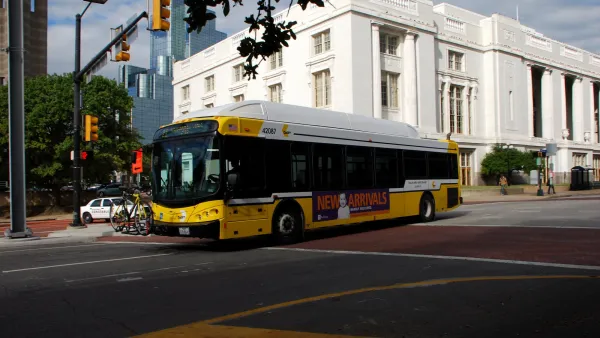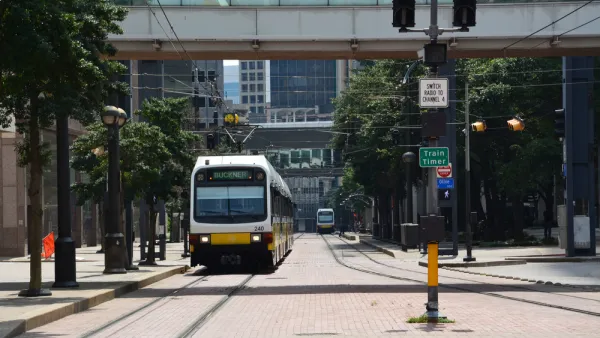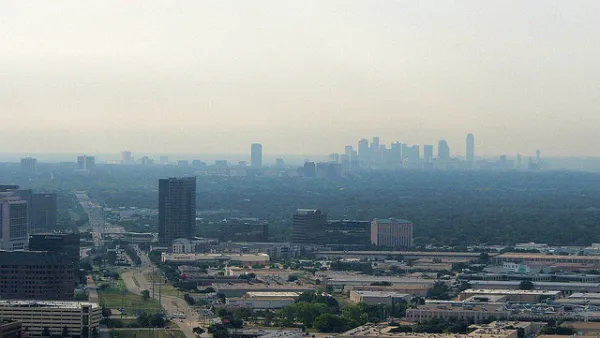According to one Dallas suburbanite, the American lawn is a "decadent and unsustainable totem[s] of middle-class prosperity."

No single feature of a suburban residential community contributes as much to the charm and beauty of the individual home and the locality as well-kept lawns," declared Abraham Levitt, founder of Levittown, one of America's first suburban tract developments.
Americans imported the concept of a residential lawn from England, where rainfall is abundant year round. However, even there, lawns were historically a luxury. "For several centuries, lawns were the exclusive purview of very rich Europeans, people who were wealthy enough to keep large swaths of land out of productive cultivation and afford the labor required to keep the grass neatly scythed," writes Nicholson.
Today, Nicholson points out, Americans allocate three times more land to lawns than corn. As the largest irrigated crop in the country, the acres of lawn would blanket the state of Mississippi. The environmental effects of maintaining these lawns are substantial.
According to National Geographic, "One sprinkler hose uses an estimated nine gallons of water per minute, or 530 gallons of water per hour. "Furthermore, Americans use 800 million gallons of gas per year to run gas-powered lawnmowers. A conservative estimate of the amount of air pollution emitted by one hour of running a gas mower is four hours. One study claims the equivalent of 11 new cars running for one hour each.
In drought-stricken California efforts are being made to reduce the amount of water wasted on lawn care, by regulating the number of hours per week a resident can water a lawn and relaxing restrictions on artificial turf. But Nicholson is not so optimistic about Texas.
They are effectively part of North Texas' infrastructure, there for however long the house it surrounds stands. But at the very least people can water a little less, rely on native plants a little bit more. If one simply must have the perfect golf-course lawn, at least let some kids play on it. Finally, if you see a lawn that's a bit overgrown or rough around the edges, don't call code enforcement; congratulate the neighbor on taking a principled stand with their forward-thinking mowing and irrigation policies."
FULL STORY: Death to Lawns

Analysis: Cybertruck Fatality Rate Far Exceeds That of Ford Pinto
The Tesla Cybertruck was recalled seven times last year.

National Parks Layoffs Will Cause Communities to Lose Billions
Thousands of essential park workers were laid off this week, just before the busy spring break season.

Retro-silient?: America’s First “Eco-burb,” The Woodlands Turns 50
A master-planned community north of Houston offers lessons on green infrastructure and resilient design, but falls short of its founder’s lofty affordability and walkability goals.

Test News Post 1
This is a summary

Analysis: Cybertruck Fatality Rate Far Exceeds That of Ford Pinto
The Tesla Cybertruck was recalled seven times last year.

Test News Headline 46
Test for the image on the front page.
Urban Design for Planners 1: Software Tools
This six-course series explores essential urban design concepts using open source software and equips planners with the tools they need to participate fully in the urban design process.
Planning for Universal Design
Learn the tools for implementing Universal Design in planning regulations.
EMC Planning Group, Inc.
Planetizen
Planetizen
Mpact (formerly Rail~Volution)
Great Falls Development Authority, Inc.
HUDs Office of Policy Development and Research
NYU Wagner Graduate School of Public Service




























